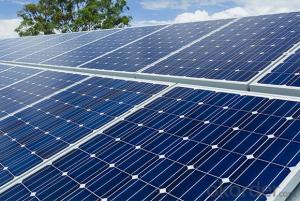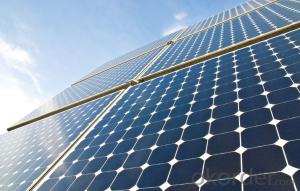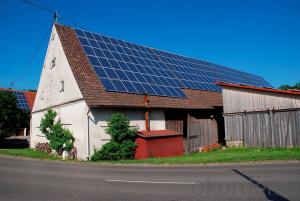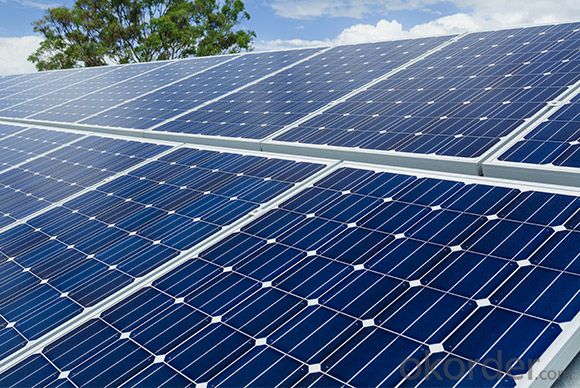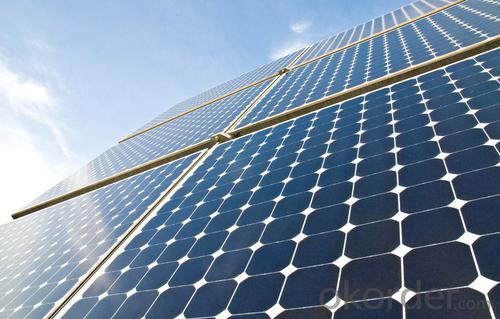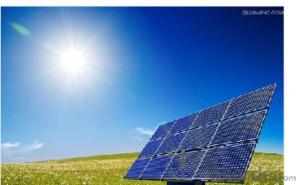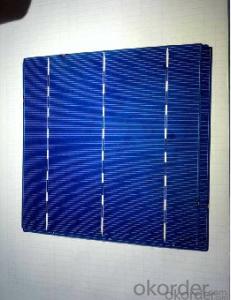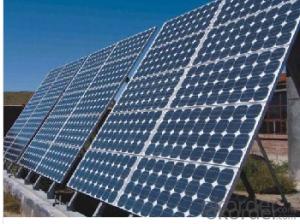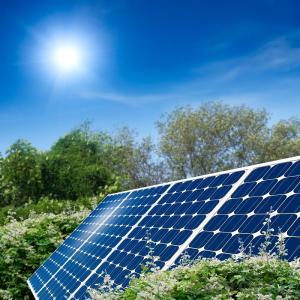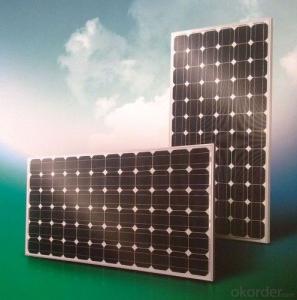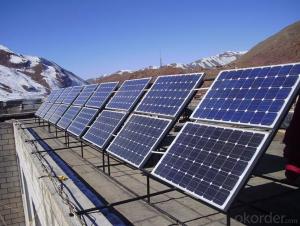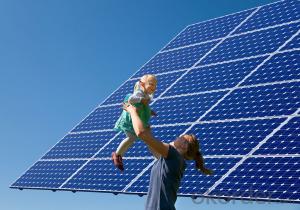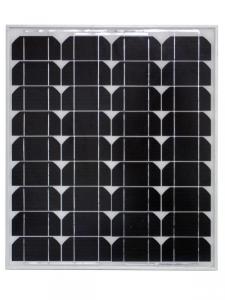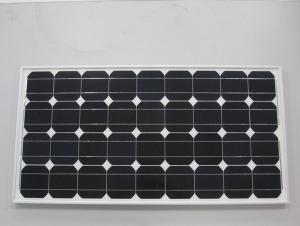12-Volt Solar Panels - CNBM 270W Mono Crystalline Solar PV Modules
- Loading Port:
- China main port
- Payment Terms:
- TT OR LC
- Min Order Qty:
- 100000 watt
- Supply Capability:
- 10000000 watt/month
OKorder Service Pledge
OKorder Financial Service
You Might Also Like
Specification
About us
CNBM International Corp, established in 2004, is the business entity for trade and logistic of CNBM Group.With the advantages in Cement, Composite Materials, New Building Materials and Engineering, CNBM mainly concentrate on coal, steel and construction equipments and give priority to solar and wind energy development.CNBM International is highly recognized by its business partners and clients all over the world and has established good business relationship with the customers in over 120 countries and regions all over the world.
Mono crystalline PV modules 270W
SIZE:1574*1081*40mm
Weight:22.0kg
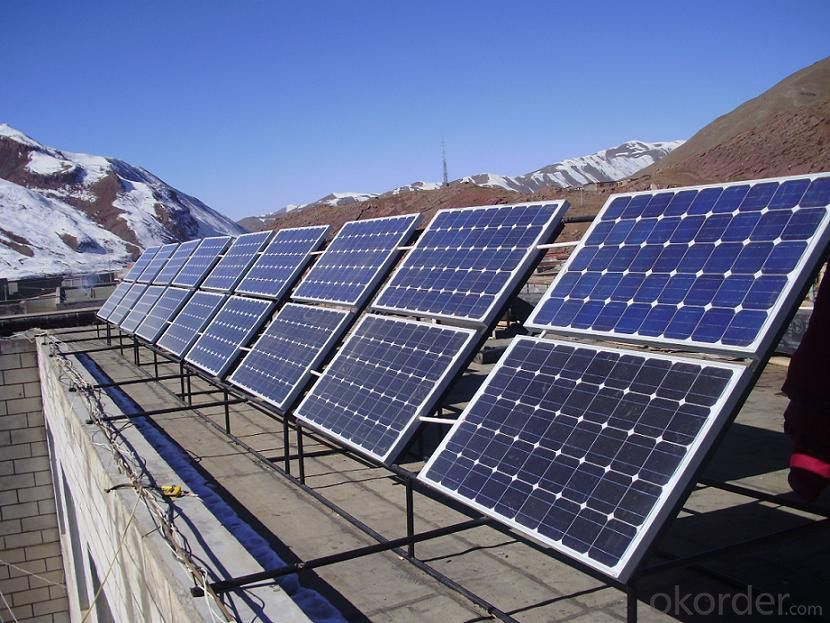
Warranty
provides a 1~3 year limited warranty (“Warranty”) against defects in materials and workmanship for its Uninterruptible power supply, Power inverter/chargers, Solar charge controllers, Battery Products (“Product”).
The term of this Warranty begins on the Product(s) initial purchase date, or the date of receipt of the Product(s) by the end user, whichever is later. This must be indicated on the invoice, bill of sale, and/or warranty registration card submitted to MUST-Solar. This Warranty applies to the original MUST-Solar Product purchaser, and is transferable only if the Product remains installed in the original use location.
FAQ
1. How do I decide which system is right for me ?
For protection from long outages, include a generator or solar panels in your Must solar system. Shorter outages can be handled by a battery-only system.
2. Where my system will be installed ?
Must solar systems are usually wall-mounted near a home's main electrical (circuit breaker) panel.
3. How do I install my system ?
A must solar backup inverter is connected to a home electric system , we will supply detailed installation manual and videos for our customers .
- Q: How do solar panels affect the power grid?
- Solar panels can have both positive and negative effects on the power grid. On the positive side, when solar panels produce excess electricity, it can be fed back into the grid, increasing the overall supply of electricity. This can help reduce the demand on traditional power plants and decrease greenhouse gas emissions. However, the intermittent nature of solar power can also introduce challenges to the grid, as it can cause fluctuations in electricity supply. To mitigate this, grid operators need to carefully manage and balance the overall energy mix to ensure a stable and reliable power supply.
- Q: What is the average cost of solar panel installation?
- The average cost of solar panel installation can vary depending on various factors such as the size of the system, location, type of panels, and any additional equipment or services required. However, as of 2021, the average cost in the United States ranges from $15,000 to $25,000. It is important to note that there may be additional incentives, tax credits, and financing options available that can help reduce the overall cost.
- Q: Do solar panels produce noise?
- No, solar panels do not produce noise as they generate electricity without any moving parts.
- Q: Can solar panels be installed on a carport structure?
- Yes, solar panels can be installed on a carport structure. In fact, carports are a popular choice for solar panel installations because they provide a dual purpose of providing shade for vehicles while generating clean, renewable energy. The structure of a carport offers ample space for solar panels to be mounted, allowing for efficient energy production while maximizing the use of available space.
- Q: I just moved into somewhere with solar panels but don't really understand them...all I know is that they heat the water.Do I still have to turn the hot water on with the solar panels or do they heat it automatically or do they store the energy until I turn on the hot water?!
- Custom solar-heating systems are unique. Does yours have a circulating pump? Does it have a storage tank? Is the fluid that goes to the panels separated from the household water and transfers heat through a heat-exchanger radiator, and the fluid has antifreeze in it? If it does, is the antifreeze of the variety that won't poison your family if there is a leak? Does your system have a thermostat-controlled pump that turns on when the water in the panels are hot? Does it have a limit-thermostat to turn off the pump when water in the storage tank is hot? There are many more variations to operation of solar-heating panels. Find out who designed it or who knows how to operate it and ask them.
- Q: How about using Solar Panals to provide the electrical power to separate the H2 from the O? H2 would be fed into the engines carburator like a gas/air mixture ratio, but H2/air mixture ratio instead. How would you control the exact measurements?
- It's an idea that will be done someday. But right now the problem is that there are much cheaper ways to get energy and run cars. So no one would use this one, because it just costs too much. As other sources of energy get costlier, and we figure out how to make solar panels better and more cheaply, this will be done. The best way known now to use the hydrogen in a car is to put it into a kind of electricity generator called a fuel cell. Then the electricity runs an electric motor. Controlling the measurements into the fuel cell is pretty easy just with a simple flow meter.
- Q: I have had this 2v portable Solar Panel for my apartment for awhile. Only problem is that I have no balcony and I can barely get enough sun to use it with my Cobra 450 400-800 watt outlet converter. Can someone advise me a better method to use these? Like do I have to get more 2v solar panels? I have a small apartment and use it on one window. Also is it possible for me to buy a portable storage tank to store the energy gathered from the sun by the solar panel?
- portable storage tank would be lead acid batteries. Use only marine sealed type for safety, about $300 each. You will need a charge controller to control the charging of the batteries. If you don't get enough sunlight, then the only alternative (aside from using the roof) is to get more panels. .
- Q: I am looking at a need of roughly 30w/hour need per 24 hour period. I have spent several hours now looking for information online and have found plenty of info regarding the panels themselves, but information regarding the batteries backups have been slim. I understand that there is a 5-7 hour peak time to collect the energy. I am looking for information regarding the batteries themselves. How do the batteries work, what size batteries should I look for, and what is the life expectency for the batteries? Any website links would also be appreciated!
- First, you didn't say the voltage. Second, 30 W/hour per day. Third, battery backup capacity in Ah = Ampere hour. For 2 Volt DC here's the calculations : 30 w/hour means = 0.83 or rounded Ampere hour. You know peak time 5-7 hour (let say 6 hour)charging time (collect the sun energy). Ampere hour per day (24 hour), with 20 Ah Battery backup is OK. And the Solar Panel is 3 Ampere charging capacity minimal = 3 Amp x 6 hour = 8 Amp hour.
- Q: My family moved into a house that came with solar power panels but they are not connected and don't really understand how to even begin.
- You will need help with this. Panels may or may not be 24 volt. If you can find a name tag, you can find out from the manufacturer's web site. Some folks hook them all in parallel. Mine are in series, to create 480 volts. the reason for going to higher voltage is to reduce power loss in the wiring. Even then, I used a wire size larger than recommended. The frames want to be interconnected, and wired to ground. The live conductors connect through disconnect switches to an inverter. The inverter is sized to the output of the panels. Where the utility allows net metering, the inverters are connected through a disconnect switch to the grid, which of course also feeds the house. Assuming you are on the grid, you will not need batteries. If outages severely impact you, you can have batteries. Counting against them is that they are costly, and use part of the power you generate, just to keep them charged. If you have batteries, it is usually best to rewire circuits so noncritical circuits are disconnected during outages. Leaving perhaps minimal lighting, fridge, freezer and critical medical circuits. Learn all you can from the Internet (try solar panels), and from the green search box above. Be sure to see if your state has a rebate program, and the conditions which it requires.
- Q: Can you connect a solar panel to speakers that use a wall outlet plug, by cutting the plug off and connect copper wire between the solar panel and cord?Confusing i know. I'm trying to connect a solar panel to speakers for a science project.
- NO NO you will cause a fire and lots of damage. Do not play with the power from a wall outlet. Outlets supply 20 or 240 volts AC Your solar panel supplies low voltage (perhaps 2 volts) DC. The two are totally incompatible. Speakers require no power, just the audio signal from a power (audio) amplifier. .
Send your message to us
12-Volt Solar Panels - CNBM 270W Mono Crystalline Solar PV Modules
- Loading Port:
- China main port
- Payment Terms:
- TT OR LC
- Min Order Qty:
- 100000 watt
- Supply Capability:
- 10000000 watt/month
OKorder Service Pledge
OKorder Financial Service
Similar products
Hot products
Hot Searches
Related keywords
